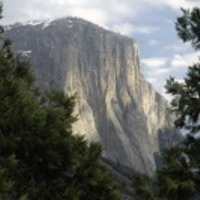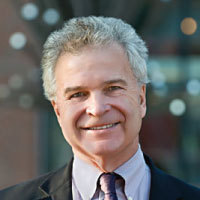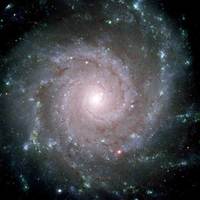Papers by Christoph Schweigert
The equations of motion for a conformal field theory in the presence of defect lines can be deriv... more The equations of motion for a conformal field theory in the presence of defect lines can be derived from an action that includes contributions from bibranes. For T-dual toroidal compactifications, they imply a direct relation between Poincare line bundles and the action of T-duality on boundary conditions. We also exhibit a class of diagonal defects that induce a shift of the B-field. We finally study T-dualities for S^1-fibrations in the example of the Wess-Zumino-Witten model on SU(2) and lens spaces. Using standard techniques from D-branes, we derive from algebraic data in rational conformal field theories geometric structures familiar from Fourier-Mukai transformations.
We consider D-branes in group manifolds, from the point of view of open strings and using the Bor... more We consider D-branes in group manifolds, from the point of view of open strings and using the Born-Infeld action on the brane worldvolume. D-branes correspond to certain integral (twined) conjugacy classes. We explain the integrality condition on the conjugacy classes in both approaches. In the Born-Infeld description, the D-brane worldvolume is stabilized against shrinking by a subtle interplay of quantized U(1) fluxes and the non-triviality of the B-field.
We consider the moduli space of flat G-bundles over the two-dimensional torus, where G is a real,... more We consider the moduli space of flat G-bundles over the two-dimensional torus, where G is a real, compact, simple Lie group which is not simply connected. We show that the connected components that describe topologically non-trivial bundles are isomorphic as symplectic spaces to moduli spaces of topologically trivial bundles with a different structure group. Some physical applications of this isomorphism which allows to trade topological non-triviality for a change of the gauge group are sketched.
Transformation Groups, 2011
Let G be a finite group. Given a finite G-set X and a modular tensor category C, we construct a w... more Let G be a finite group. Given a finite G-set X and a modular tensor category C, we construct a weak G-equivariant fusion category C X , called the permutation equivariant tensor category. The construction is geometric and uses the formalism of modular functors. As an application, we concretely work out a complete set of structure morphisms for Z/2permutation equivariant categories, finishing thereby a program we initiated in [BFRS10]. * Email addresses:
Theoretical and Mathematical Physics, 1994
We review the coset construction of conformal field theories; the emphasis is on the construction... more We review the coset construction of conformal field theories; the emphasis is on the construction of the Hilbert spaces for these models, especially if fixed points occur. This is applied to the N = 2 superconformal cosets constructed by Kazama and Suzuki. To calculate heterotic string spectra we reformulate the Gepner construction in terms of simple currents and introduce the so-called extended Poincaré polynomial. We finally comment on the various equivalences arising between models of this class, which can be expressed as level rank dualities.
Nuclear Physics B, 2009
The equations of motion for a conformal field theory in the presence of defect lines can be deriv... more The equations of motion for a conformal field theory in the presence of defect lines can be derived from an action that includes contributions from bibranes. For T-dual toroidal compactifications, they imply a direct relation between Poincaré line bundles and the action of T-duality on boundary conditions. We also exhibit a class of diagonal defects that induce a shift of the B-field. We finally study T-dualities for S 1 -fibrations in the example of the Wess-Zumino-Witten model on SU(2) and lens spaces. Using standard techniques from D-branes, we derive from algebraic data in rational conformal field theories geometric structures familiar from Fourier-Mukai transformations.
Communications in Mathematical Physics, 1992
We show that two dimensional N = 2 superconformal field theories cannot be constructed by applyin... more We show that two dimensional N = 2 superconformal field theories cannot be constructed by applying the supersymmetric extension of the GKO construction to the so-called special subalgebras, i.e. subalgebras for which at least one generator associated to a root of the subalgebra does not correspond to a root of the algebra itself. We thus prove the completeness of the classification of N = 2 supersymmetric coset models obtained by Kazama and Suzuki. Furthermore we point out that compared to their papers an additional criterion has to be added in the N = 2 conditions. * Work supported by the Studienstiflung des deutschen Volkes ** Bitnet address: bd3@dhdurzl.bitnet
Classical and Quantum Gravity, 1995
We reconsider space-time singularities in classical Einsteinian general relativity: with the help... more We reconsider space-time singularities in classical Einsteinian general relativity: with the help of several new co-ordinate systems we show that the Schwarzschild solution can be extended beyond the curvature singularity at r = 0. The extension appears as an infinite covering of standard Kruskal space-time. While the twodimensional reduction of this infinite sequence of Kruskal-Szekeres domains obtained by suppressing the angular degrees of freedom is still a topological manifold -albeit one for which the metric structure is singular on one-dimensional submanifoldswe obtain for the full four-dimensional geometry the more general structure of a stratified variety.
Journal of Algebra, 2015
Given a Hopf algebra H and a projection H → A to a Hopf subalgebra, we construct a Hopf algebra r... more Given a Hopf algebra H and a projection H → A to a Hopf subalgebra, we construct a Hopf algebra r(H), called the partial dualization of H, with a projection to the Hopf algebra dual to A. This construction provides powerful techniques in the general setting of braided monoidal categories. The construction comprises in particular the reflections of generalized quantum groups [HS13]. We prove a braided equivalence between the Yetter-Drinfel'd modules over a Hopf algebra and its partial dualization.
International Journal of Modern Physics A, 1998
We introduce an orbifold induction procedure which provides a systematic construction of cyclic o... more We introduce an orbifold induction procedure which provides a systematic construction of cyclic orbifolds, including their twisted sectors. The procedure gives counterparts in the orbifold theory of all the current-algebraic constructions of conformal field theory and enables us to find the orbifold characters and their modular transformation properties.
Nuclear Physics B, 2002
The spectrum of D2-branes wrapped on an ALE space of general ADE type is determined, by represent... more The spectrum of D2-branes wrapped on an ALE space of general ADE type is determined, by representing them as boundary states of N=2 superconformal minimal models. The stable quantum states have RR charges which precisely represent the gauge fields of the corresponding Lie algebra. This provides a simple and direct physical link between the ADE classification of N=2 superconformal field
Highlights in Lie Algebraic Methods, 2012
Nuclear Physics B 588, Mar 31, 2000
In string theory various projections have to be imposed to ensure supersymmetry. We study the con... more In string theory various projections have to be imposed to ensure supersymmetry. We study the consequences of these projections in the presence of world-sheet boundaries. A-type boundary conditions come in several classes; only boundary fields that do not change the class preserve supersymmetry. Our analysis takes in particular properly into account the resolution of fixed points under the projections. Thus, e.g., the compositeness of some previously considered boundary states of Gepner models follows from chiral properties of the projections. Our arguments are model independent; in particular, integrality of all annulus coefficients is ensured by model independent arguments.
The role of automorphisms of infinite-dimensional Lie algebras in conformal field theory is exami... more The role of automorphisms of infinite-dimensional Lie algebras in conformal field theory is examined. Two main types of applications are discussed; they are related to the enhancement and reduction of symmetry, respectively. The structures one encounters also appear in other areas of physics and mathematics. In particular, they lead to two conjectures on the sub-bundle structure of chiral blocks, and they are instrumental in the study of conformally invariant boundary conditions.
Eprint Arxiv Hep Th 0001005, 2000
Various aspects of spaces of chiral blocks are discussed. In particular, conjectures about the di... more Various aspects of spaces of chiral blocks are discussed. In particular, conjectures about the dimensions of irreducible sub-bundles are reviewed and their relation to symmetry breaking conformal boundary conditions is outlined.
We study (pre-)sheaves in bicategories on geometric categories: smooth manifolds, manifolds with ... more We study (pre-)sheaves in bicategories on geometric categories: smooth manifolds, manifolds with a Lie group action and Lie groupoids. We present three main results: we describe equivariant descent, we generalize the plus construction to our setting and show that the plus construction yields a 2-stackification for 2-prestacks. Finally we show that, for a 2-stack, the pullback functor along a Morita-equivalence of Lie groupoids is an equivalence of bicategories. Our results have direct applications to gerbes and 2-vector bundles. For instance, they allow to construct equivariant gerbes from local data and can be used to simplify the description of the local data. We illustrate the usefulness of our results in a systematic discussion of holonomies for unoriented surfaces.
Nuclear Physics B, Feb 1, 1996
The fixed point resolution problem is solved for diagonal coset theories. The primary fields into... more The fixed point resolution problem is solved for diagonal coset theories. The primary fields into which the fixed points are resolved are described by submodules of the branching spaces, obtained as eigenspaces of the automorphisms that implement field identification. To compute the characters and the modular S-matrix we use 'orbit Lie algebras' and 'twining characters', which were introduced in a previous paper. The characters of the primary fields are expressed in terms of branching functions of twining characters. This allows us to express the modular S-matrix through the S-matrices of the orbit Lie algebras associated to the identification group. Our results can be extended to the larger class of 'generalized diagonal cosets'.
Based on a weak action of a finite group J on a finite group G, we present a geometric constructi... more Based on a weak action of a finite group J on a finite group G, we present a geometric construction of J-equivariant Dijkgraaf-Witten theory as an extended topological field theory. The construction yields an explicitly accessible class of equivariant modular tensor categories. For the action of a group J on a group G, the category is described as the representation











Uploads
Papers by Christoph Schweigert